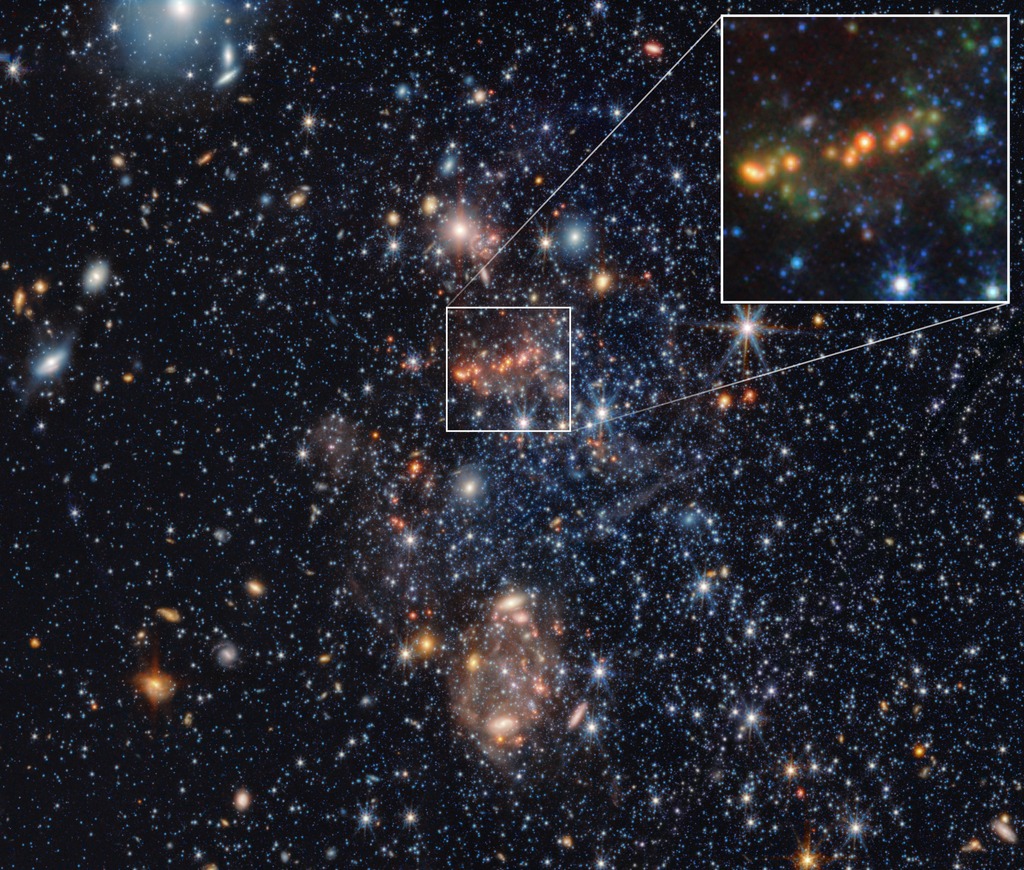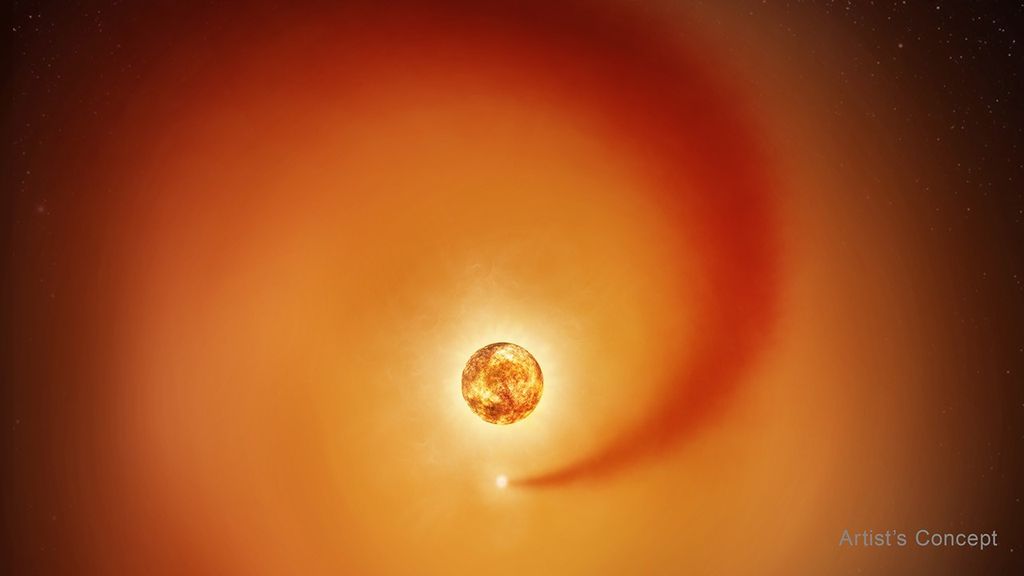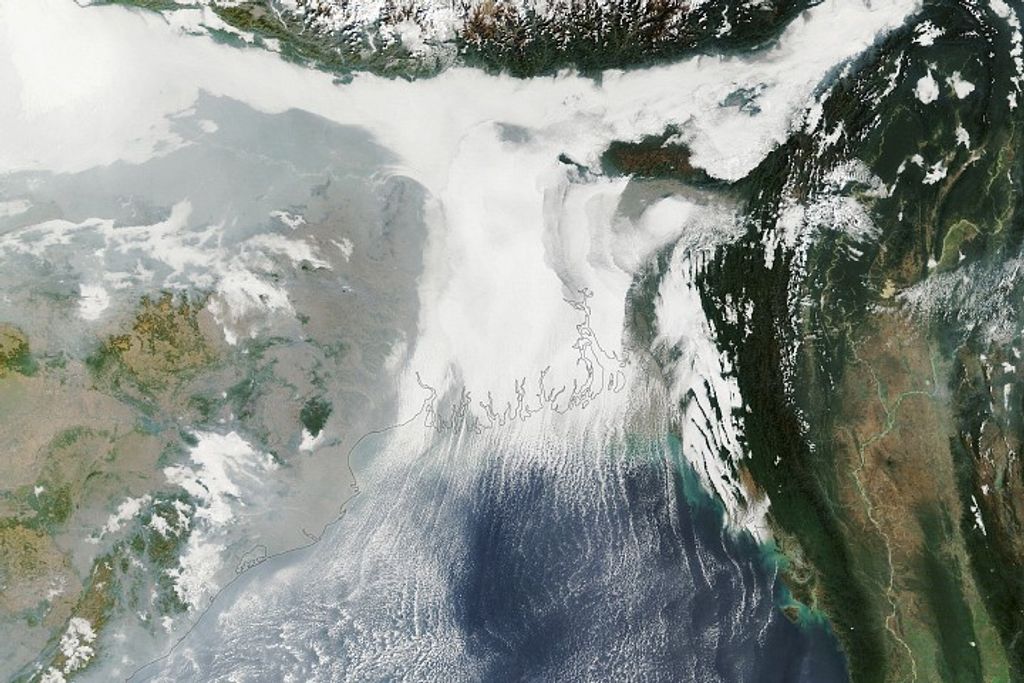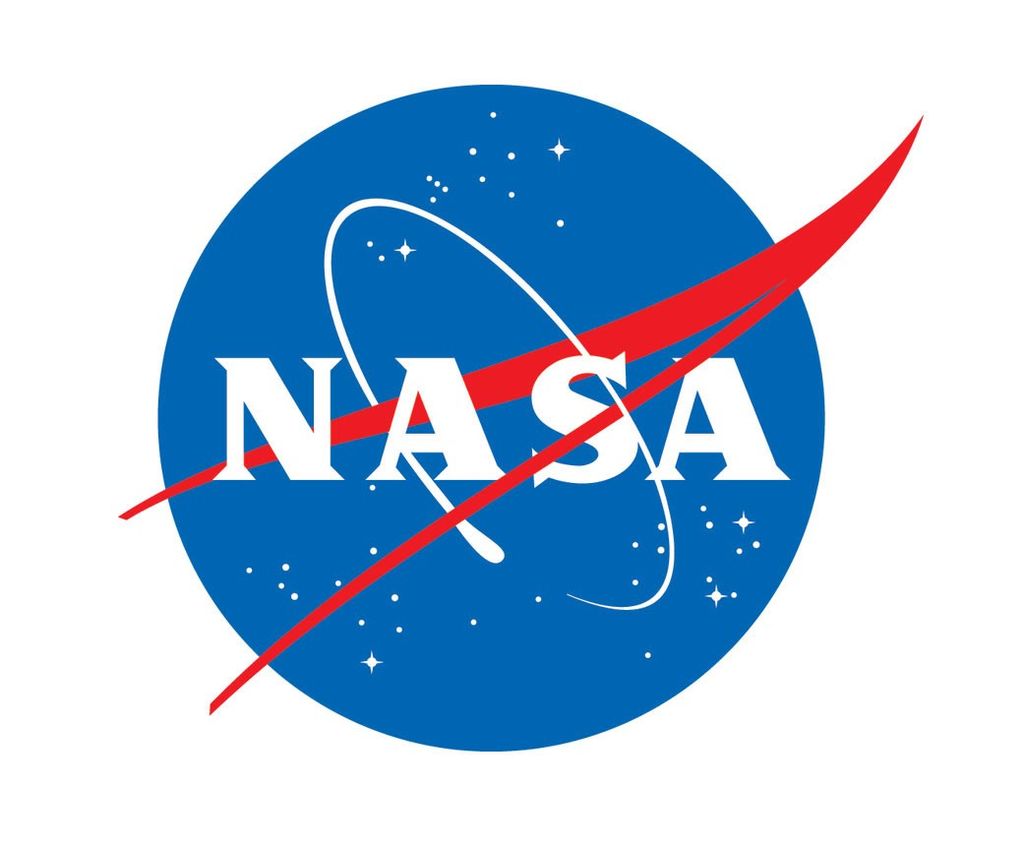1 min read
Central Region of Orion Nebula (VLT)
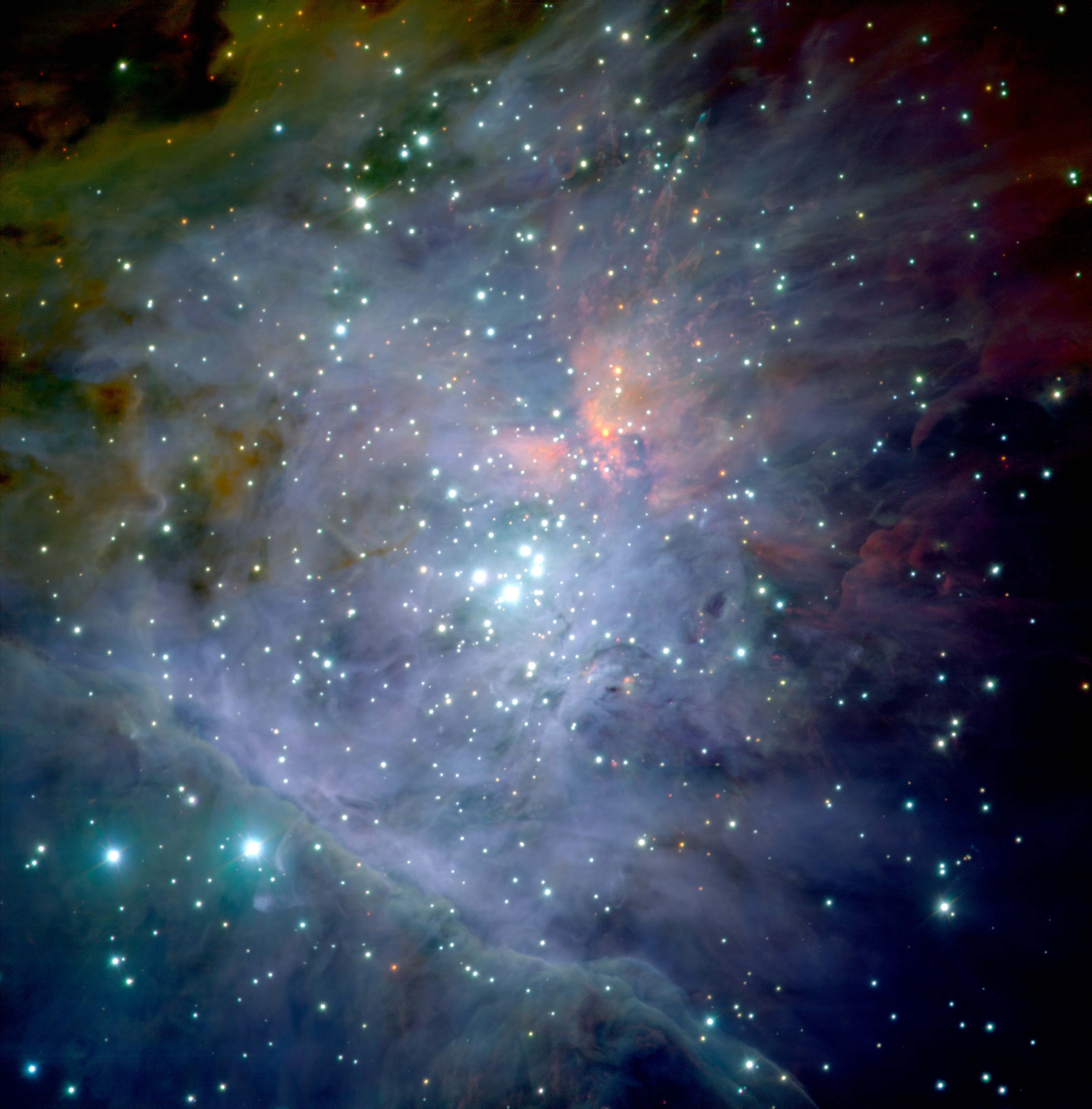
This color-composite mosaic of the central part of the Orion Nebula is based on 81 images from the European Southern Observatory (ESO) Very Large Telescope at the Paranal Observatory in Chile. The famous Trapezium stars appear near the center, amid the Trapezium Cluster, the very crowded home of more than a thousand young stars. Researchers will train Webb on this region to study phenomena associated with the birth of stars and planets.
About the Object
- R.A. PositionR.A. PositionRight ascension – analogous to longitude – is one component of an object's position.05h 35m 17.29s
- Dec. PositionDec. PositionDeclination – analogous to latitude – is one component of an object's position.-5° 23' 27.99"
- DistanceDistanceThe physical distance from Earth to the astronomical object. Distances within our solar system are usually measured in Astronomical Units (AU). Distances between stars are usually measured in light-years. Interstellar distances can also be measured in parsecs.The distance to the Orion Nebula is 1,500 light-years (460 parsecs).
About the Data
- Data DescriptionData DescriptionProposal: A description of the observations, their scientific justification, and the links to the data available in the science archive.
Science Team: The astronomers who planned the observations and analyzed the data. "PI" refers to the Principal Investigator.This color composite mosaic image is based on 81 images obtained with the infrared multi-mode ISAAC instrument on the ESO Very Large Telescope (VLT) at the Paranal Observatory. - InstrumentInstrumentThe science instrument used to produce the data.ISAAC
- FiltersFiltersThe camera filters that were used in the science observations.J, H, K
- Object NameObject NameA name or catalog number that astronomers use to identify an astronomical object.Orion Nebula, M42, NGC 1976
- Object DescriptionObject DescriptionThe type of astronomical object.Star-forming region/ emission nebula
- Release DateApril 30, 2020
- Science ReleaseNASA’s Webb Telescope to Unravel Riddles of a Stellar Nursery
- CreditImage: ESO, Mark McCaughrean
Related Images & Videos
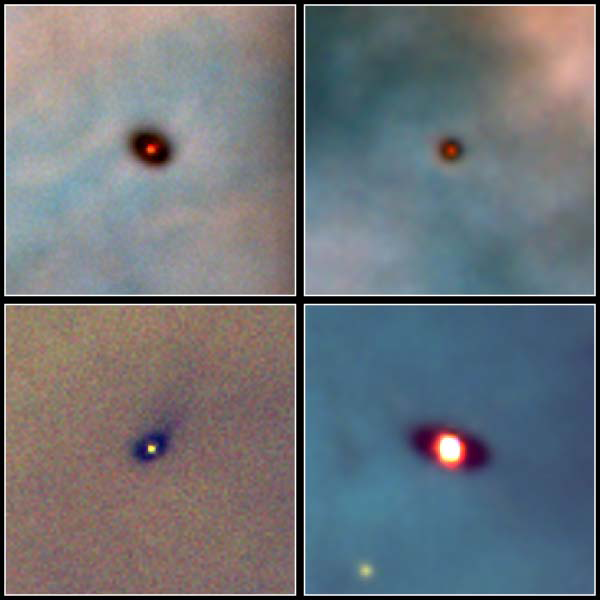
Four Proplyds in the Orion Nebula (Hubble)
These are Hubble Space Telescope images of four protoplanetary disks around young stars in the Orion Nebula, approximately 1,300 light-years away. The disks range in size from two to eight times the diameter of our solar system. Astronomers spotted the disks in large-scale...
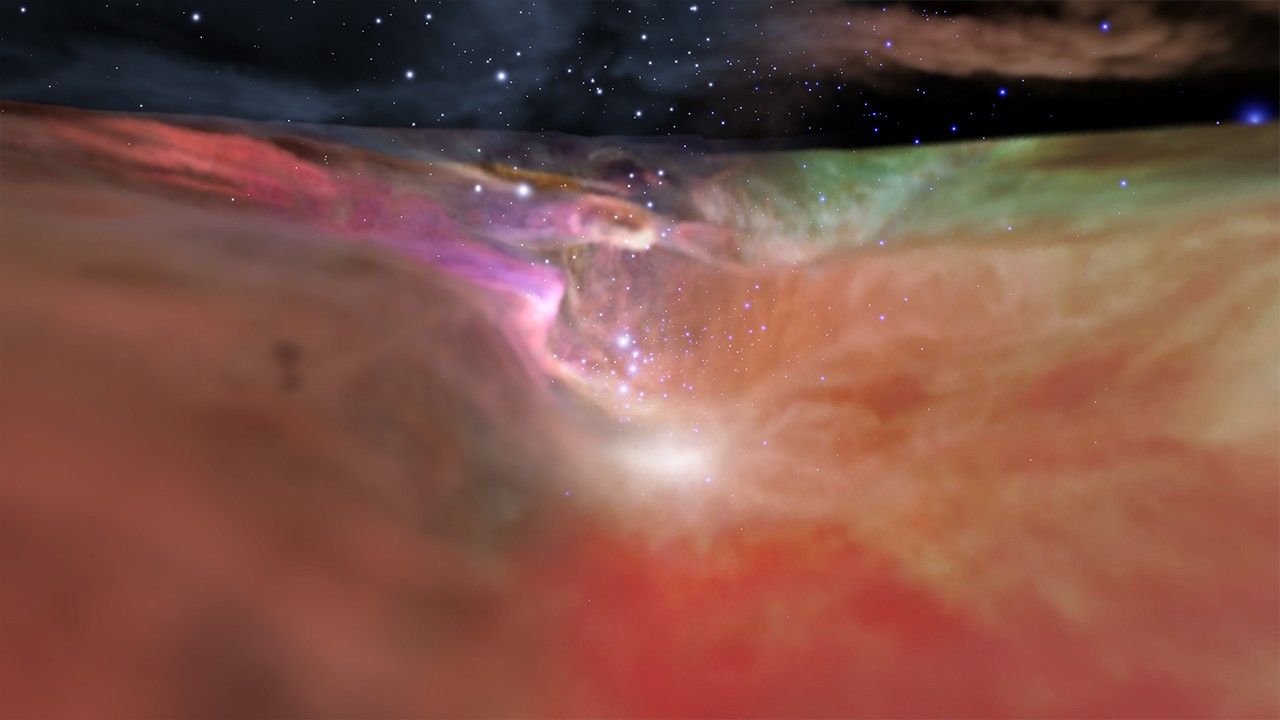
Visualization of the Orion Nebula in Visible and Infrared Light
This visualization explores the Orion Nebula using both visible and infrared light. The sequence begins with a wide-field view of the sky showing the plane of our Milky Way Galaxy, then zooms down to the scale of the Orion Nebula. The visible light observation (from the Hubble...
Share
Details
Laura Betz
NASA’s Goddard Space Flight Center
Greenbelt, Maryland
laura.e.betz@nasa.gov
ESO, Mark McCaughrean

